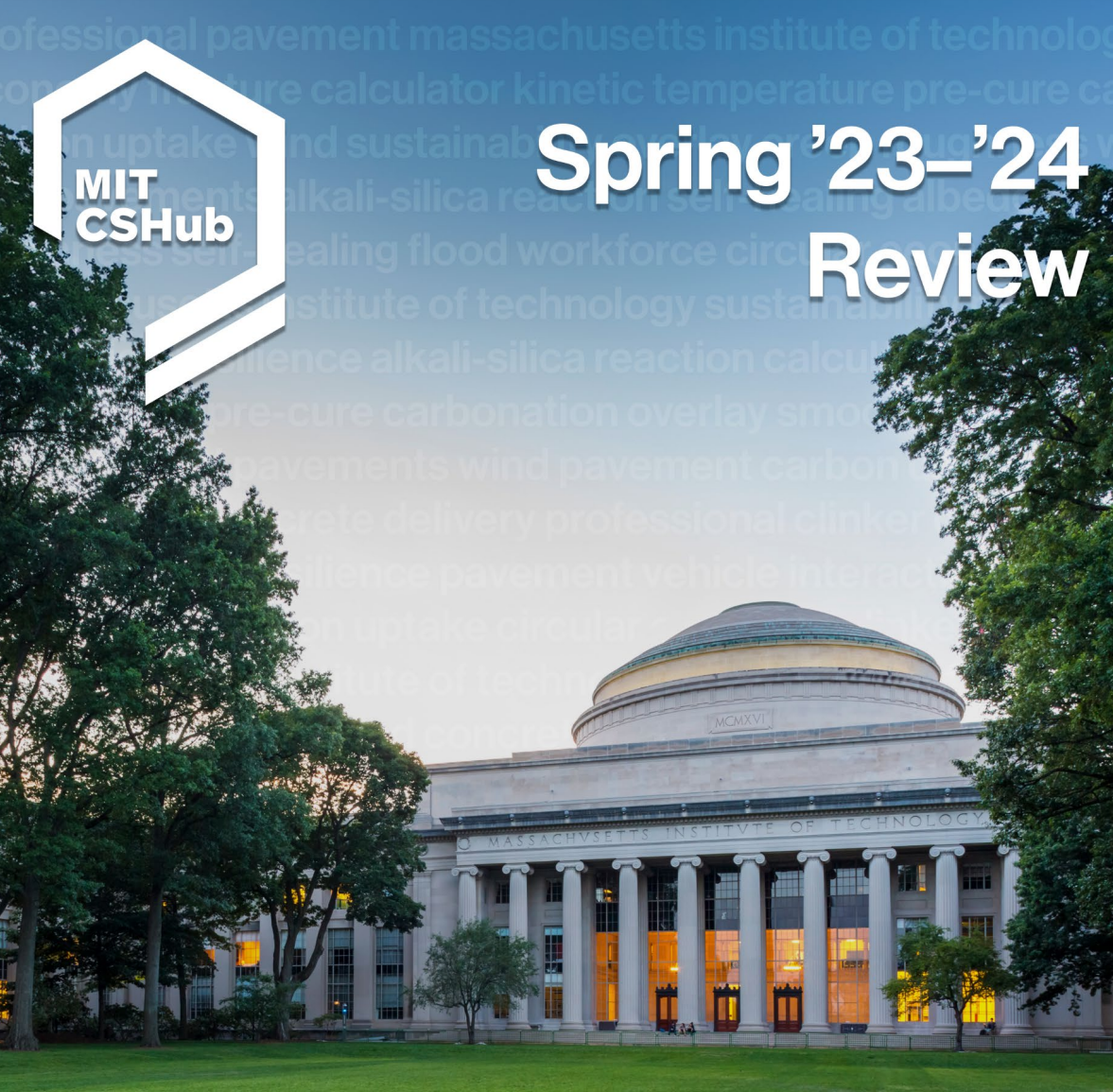The New York Times featured Dr. Admir Masic’s research on ancient Roman concrete’s self-healing ability and how to harness it to boost the resilience of today’s concrete. Read the new article.
Link
‘Nutrition Facts’ for Emissions: Why EPA Must Account for the Whole Life Cycle in Low Carbon Labels
In their new op-ed in RealClearEnergy, Hessam AzariJafari, Ipek Bensu Manav, and Andrew Laurent explain that while the U.S. Environmental Protection Agency (EPA)’s new low-carbon labels for construction materials are an important step forward, they must account for emissions beyond production to best aid purchasing decisions. The authors propose that the EPA use life cycle assessment tools to generate actionable emissions ranges that account for context and climate, and also expand the range of materials covered under the labeling program.
CSHub launches hazard-informed building LCA dashboard
What makes a building “green?” Conventional understandings of green buildings focus on the greenhouse gas emissions associated with constructing the building. However, as our new dashboard demonstrates, exterior wall material choice has a significant impact on hazard repairs, regular wear-and-tear, and operational energy usage. Dashboard prepared by Dr. Ipek Bensu Manav.

Research Brief: Next-generation concrete: Combining loadbearing and energy storage solutions
Electron-conducting concrete combines scalability and durability with energy storage and delivery capabilities, becoming a potential enabler of the renewable energy transition. In a new research brief by the CSHub and MIT ec³ hub, we explore the mechanics and applications of this technology.

MITEI selects CSHub CCUS project for funding within energy research cohort
Our project investigating how to enable widespread carbon capture, transport, and storage at scale for hard-to-abate sectors has been selected for funding by the MIT Energy Initiative’s Future Systems Center. Led by Research Scientist Elizabeth Moore, the research is exploring the potential of a large-scale pipeline network based around the location of “carbon hubs,” or collections of nearby industrial facilities. We are thrilled to join the nine other energy research projects selected in this cohort and thank MITEI for their support.
New framework empowers pavement life-cycle decision-making while reducing data collection burden
Roads are the backbone of our society and economy, taking people and goods across distances long and short. They are a staple of the built environment, taking up nearly 2.8 million lane-miles (or 4.6 million lane-kilometers) of the United States’ surface area.
These same roads have a considerable life-cycle environmental impact, having been associated with over 75 megatons of greenhouse gases (GHG) each year over the past three decades in the United States. That is equivalent to the emissions of a gasoline-powered passenger vehicle traveling over 190 billion miles, or circling the Earth more than 7.5 million times, each year.
RC3 Consortium releases one-pager on EPD utility for pavement decision-making
A new one-pager created by the Reduced Carbon Concrete Consortium (RC3) covers the utility of environmental product declarations (EPDs) for pavement decision-making.
Key takeaways:
- EPDs are not intended to be used to compare the environmental impacts of asphalt and concrete
- It may be possible to compare EPDs if:
- Materials are of the same type
- EPDs are developed under the same PCR
- Materials meet the same performance requirements
- EPDs in North America quantify cradle-to-gate emissions, but do not consider construction, use, or end-of-life phases (all three comprise 78% of the life cycle emissions).
- Cradle-to-gate EPDs can be compared if all subsequent life cycle stages are equivalent for both EPDs.
- EPDs are useful for:
- Providing a benchmark for continuous improvement in environmental impacts
- Evaluating compliance with Buy Clean thresholds
- Estimating the carbon budget for a project
Further reading:
1. AzariJafari et al. (2023). Suitability of EPDs for Supporting Life Cycle and Comparative Analysis of Concrete Mixtures. Environmental Science and Technology, 57 (19), 7321-7327. https://doi-org.ezproxy.canberra.edu.au/10.1021/acs.est.2c05697.
2. AzariJafari et al. (2021). Towards comparable environmental product declarations of construction materials: Insights from a probabilistic comparative LCA approach. Building and Environment, 190, 107542. https://doi-org.ezproxy.canberra.edu.au/10.1016/j.buildenv.2020.107542.
3. Hossein et al. (2022). The role of performance metrics in comparative LCA of concrete mixtures incorporating solid wastes: A critical review and guideline proposal. Waste Management, 140, 40-54. https://doi-org.ezproxy.canberra.edu.au/10.1016/j.wasman.2022.01.010.
Brief: Natural carbon uptake in single-family homes: An element-level assessment approach
To create a more precise estimate for the carbon uptake of buildings, the MIT CSHub has developed a bottom-up, context-sensitive approach to estimate the uptake of different cement-based products (CBPs) in a building by estimating the uptake in individual CBPs within that building [3]. This brief describes estimates for single-family homes and the elements they comprise derived using this modeling approach. These results are intended to help in making informed decisions about the capacities of CBPs in buildings to help (confine and) neutralize carbon emissions.
Interim Report: Accounting for Carbon Uptake in the EPDs of Cement-based Products
In this report, a framework is proposed to account for carbon uptake in Product Category Rules (PCRs) for creating EPDs. The proposed method elaborates the multi-level approach adopted to define carbon uptake estimation based on the information available to EPD producers and users. The report highlights the need for a probabilistic framework to account for uncertainties associated with the input data and modeling approach. The report also aims to provide guidelines for producers to incorporate carbon uptake estimates into EPDs based on end-use applications and create a baseline for a science-based and transparent method generalizable to other components of a CBP’s life cycle.
MIT CSHub Spring ’23-’24 Review
Learn about the MIT CSHub’s research, communications, and implementation impacts across sustainability, infrastructure, resilience, and workforce since Spring 2023 in our newly-released Spring Review.


